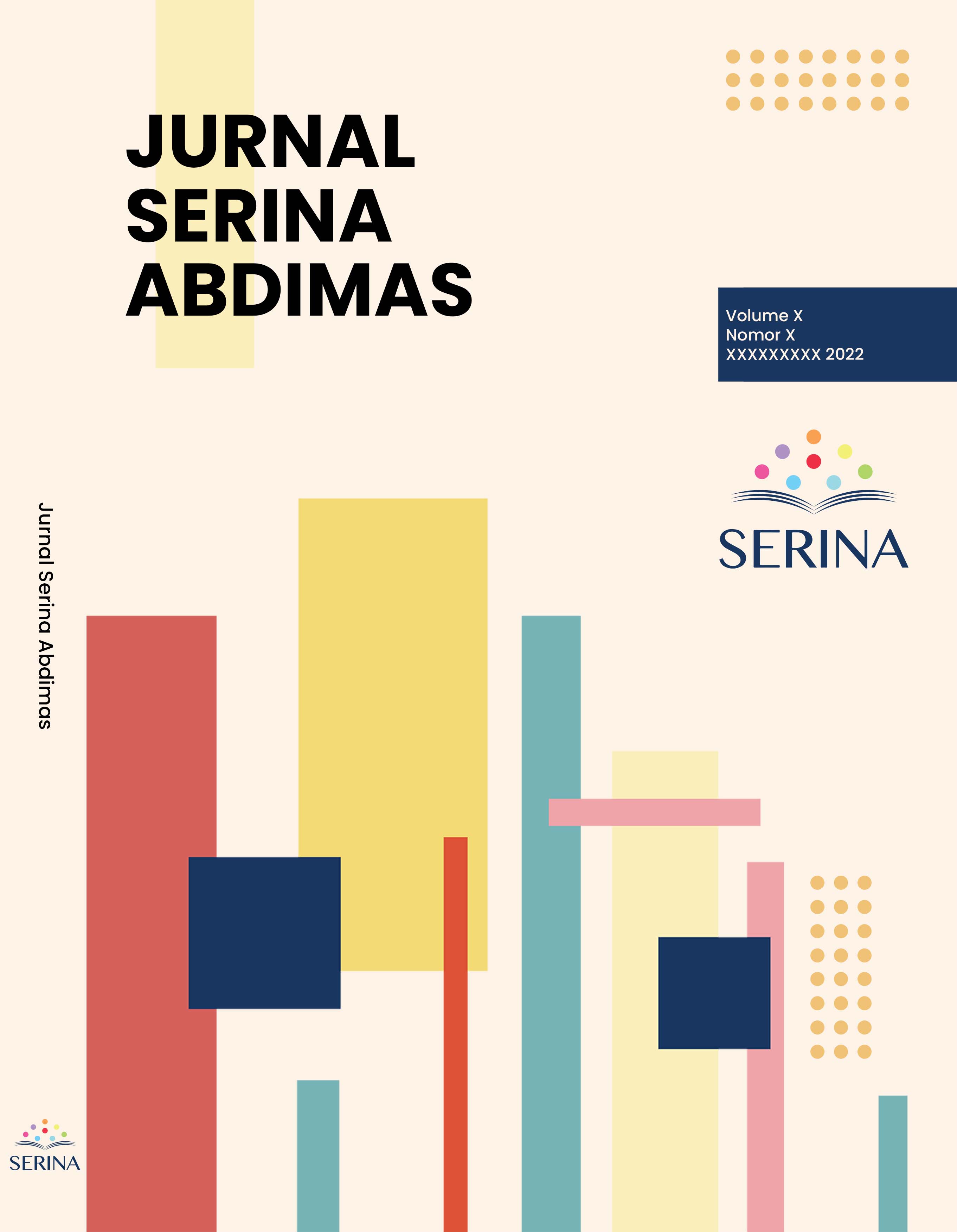EDUKASI PENCEGAHAN PENYAKIT INFEKSI CACING PADA SISWA-SISWI SEKOLAH DASAR
Main Article Content
Abstract
Worm infections can cause symptoms but are more often asymptomatic in infected individuals. Worm infections are a significant health issue that needs serious attention, especially in tropical areas, because they are not well detected. Primary school children are the largest population affected by worm infections, particularly soil-transmitted helminths (STH). Children aged 6-12 years are in the age group that is most vulnerable and frequently infected by worms. Based on field surveys, partners recommend materials on the prevention of worm infections because this issue has never been addressed at the school in question. Therefore, it is crucial to conduct health service activities related to this issue, with the hope that children will not be infected with worms in the future. The method used in this community service activity is education through direct health education session. The success of the activity is measured by the increase in knowledge by comparing the pre-test and post-test results. This activity was attended by fourth and fifth-grade students. A total of 88 students completed both the pre-test and post-test comprehensively. The average pre-test score before the health education session activity was 48.86 points. The post-test results after the health education session activity showed an average score of 88.26 points, indicating an 80.64% increase in knowledge. From this activity, it can be concluded that there was a significant improvement in the knowledge of fourth and fifth-grade students regarding worm infections. With these results, it is hoped that primary school students will become more aware of worm infections, preventing the occurrence of worm infections in the future.
ABSTRAK
Penyakit cacing dapat menimbulkan gejala namun lebih sering tanpa gejala pada seseorang yang terinfeksi. Masalah penyakit cacing menjadi masalah kesehatan yang perlu mendapatkan perhatian serius terutama untuk daerah tropis karena tidak terdeteksi dengan baik. Anak usia sekolah dasar menjadi populasi terbesar dalam infeksi penyakit cacing terutama soil transmitted helminths (STH). Usia 6-12 tahun termasuk pada usia yang rentan dan tersering terinfeksi cacing. Berdasarkan survei lapangan mitra merekomendaikan materi mengenai pencegahan infeksi cacing karena masalah ini belum pernah dilaksanakan di sekolah tersebut. Maka sangat perlu dilakukan kegiatan bakti kesehatan terkait masalah ini, sehingga diharapkan anak-anak tidak terinfeksi dengan penyakit cacing dikemudian hari. Metode yang digunakan pada kegiatan pengabdian masyarakat ini adalah edukasi dengan melakukan penyuluhan secara langsung. Keberhasilan kegiatan dinilai dengan ada tidaknya peningkatan pengetahuan dengan membandingkan hasil pretes dengan postes. Kegiatan ini diikuti oleh siswa-siswi kelas 4 dan 5. Total sebanyak 88 oarang siswa-siswa yang mengisi pretes dan postes secara lengkap. Rerata nilai pretes dari sebelum kegiatan penyuluhan adalah 48,86 poin. Hasil postes setelah dilakukan penyuluhan adalah 88,26 poin, sehingga terdapat peningkatan pengetahuan sebesar 80,64%. Melalui kegiatan ini dapat disimpulkan bahwa terdapat peningkatan pengetahuan yang sangat baik pada siswa-siswi kelas 4 dan 5 mengenai penyakit infeksi cacing, Dengan hasil tersebut diharapkan siswa-siswi sekolah dasar dapat semakin mengenali mengenai penyakit infeksi cacing sehingga jangan sampai timbul penyakit cacing dikemudian hari.
Article Details

This work is licensed under a Creative Commons Attribution-NonCommercial-ShareAlike 4.0 International License.
References
Angria, N., & Ka’bah. (2023). Edukasi dan pemeriksaan kecacingan pada anak SDN. Baddoka Kota Makassar. Jurnal Visi Pengabdian Kepada Masyarakat, 4(2), 50-58. https://doi.org/10.51622/pengabdian.v4i2.1332
Centers for Disease Control (CDC). 2023. Parasit Soil Transmitted helminths. Retrieved from: https://www-cdc-gov.translate.goog/parasites/sth/index.html?_x_tr_sl=en&_x_tr_tl=id&_x_tr_hl=id&_x_tr_pto=sc
Kementerian Kesehatan Republik Indonesia (Kemenkes). 2022. Cacingan pada anak. https://yankes.kemkes.go.id/view_artikel/1288/cacingan-pada-anak
Monica S, Tabita N, Esther M, Helena P. (2020). Soil-Transmitted Helminth Infections, Anemia, and Undernutrition Among School-Children in An Elementary School in North Jakarta, Indonesia. Majalah Kedokteran Bandung, 52 (4):205–12. https://journal.fk.unpad.ac.id/index.php/mkb/article/view/2137
Okoyo, C., Campbell, S.J., Minnery, M., Owaga, C., Onyango, N., Medley, G., & Mwandawiro, C. 2021. Prevalence and Correlation Analysis of Soil-Transmitted Helminths Infections and Treatment Coverage for Preschool and School Aged Children in Kenya: Secondary Analysis of the National School Based Deworming Program Data. Frontiers in public health, 9. https://www.ncbi.nlm.nih.gov/pmc/articles/PMC8322119/
Sihura P, Augustina I, Rahman Jabal A. 2022. Literature Review: Hubungan Higienitas Perorangan Dengan Kejadian Infeksi Cacingan (Soil Transmitted Helminths) Pada Anak Usia Sekolah Dasar. JKUPR, 10(1):1-7. Retrieved from: https://e-journal.upr.ac.id/index.php/JK/article/view/3496
Tifannov, A.L. 2019. Infeksi Cacing Usus Soil Transmitted Helminths terhadap Kebiasan Mencucui Tangan pda Siswa SD. J. Laboratorium Medis, 01 (01): 1-5. https://ejournal.poltekkes-smg.ac.id/ojs/index.php/JLM/article/download/4922/1312
Wawan, A & Dewi, M. 2010. Teori & pengukuran pengetahuan, sikap dan perilaku manusia. Yogyakarta: Nuha Medika.
World Health Organization (WHO). 2020. Targets for soil-transmitted helminthiases control programmes. Retrieved from: https://www.who.int/publications/i/item/9789240000315
World Health Organization (WHO). 2023. Soil-Transmitted Helminth Infections Fact Sheet. World Health Organization. Retrieved from: https://www.who.int/news-room/fact-sheets/detail/soil-transmitted-helminth-infections

